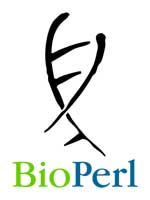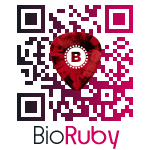| Please visit our ***NEW*** OBF/BOSC website: https://www.open-bio.org/ |
-
Difference between revisions of "Google Summer of Code 2014 Ideas"
From Open Bioinformatics Foundation
(Added project contact info, reformatted as subsections) |
(→BioInterchange: Convert and Exchange Biological File Formants using RESTful web service: Copied from the other wiki page) |
||
| Line 5: | Line 5: | ||
==Cross-project ideas== | ==Cross-project ideas== | ||
| − | === [http://www. | + | === BioInterchange: Convert and Exchange Biological File Formants using RESTful web service === |
| + | |||
| + | ; Rationale | ||
| + | : [http://www.biointerchange.org/index.html BioInterchange] Interchange data using the Resource Description Framework (RDF) and let BioInterchange automagically create RDF triples from your TSV, XML, GFF3, GVF, Newick and other files common in Bioinformatics. BioInterchange helps you transform your data sets into linked data for sharing and data integration via command line, web-service, or API. BioInterchange was conceived and designed during NBDC/DBCLS's [http://2012.biohackathon.org/ BioHackathon 2012]. Architecture and RDF serialization implementations were provided by Joachim Baran, Geraint Duck provided JSON and XML deserialization implementations and contributed to architecture decisions, guidance on ontology use and applications were given by Kevin B. Cohen and Michel Dumontier, where Michel brought forward and extended the Semanticscience Integrated Ontology (SIO). Jin-Dong Kim helped to define ontology relationships for RDFizing DBCLS' PubAnnotation category annotations. The main idea is to have a central service with can be used as a validator and as interchange service for different languages. | ||
| + | |||
| + | ; Approach | ||
| + | :The project will identify the most common and used file formants for all the currently used language under OBF and will design a RESTful API and will project an implementation for all the supported languages. BioInterchange was developed with Ruby but the scope of the project is to have an agnostic system which let use implement a converter using the best language for that functionality. It expected to have a high traffic for the service so an appropriate refactoring or reimplementation using parallel techniques or languages devoted to parallel programming would be possible. | ||
| + | |||
| + | ; Difficulty and needed skills | ||
| + | :The project is mid / high difficulty, aimed at talented students. Previous knowledge of Ruby or other scripting language is preferred and flexibility in learning other languages is requireed. | ||
| + | ; The project requires | ||
| + | :Knowledge of advanced programming languages and meta-programming and some concept in parallelizing and web services design. | ||
| + | |||
| + | ; Mentors | ||
| + | : Raoul J.P. Bonnal, Francesco Strozzi, Toshiaki Katayama, Joachim Baran | ||
=== [http://sbml.org/GSoC2014 Native and JVM-based support for the Systems Biology Markup Language (SMBL)] === | === [http://sbml.org/GSoC2014 Native and JVM-based support for the Systems Biology Markup Language (SMBL)] === | ||
Revision as of 16:41, 14 February 2014
Interested mentors and students should subscribe to the OBF/GSoC mailing list and announce their interest - that is the way we can track what is happening.
Mentor names and project ideas are hosted on each member project's wiki on a dedicated Google Summer of Code page. See each of the member projects, linked below, for more details about any project:
Cross-project ideas
BioInterchange: Convert and Exchange Biological File Formants using RESTful web service
- Rationale
- BioInterchange Interchange data using the Resource Description Framework (RDF) and let BioInterchange automagically create RDF triples from your TSV, XML, GFF3, GVF, Newick and other files common in Bioinformatics. BioInterchange helps you transform your data sets into linked data for sharing and data integration via command line, web-service, or API. BioInterchange was conceived and designed during NBDC/DBCLS's BioHackathon 2012. Architecture and RDF serialization implementations were provided by Joachim Baran, Geraint Duck provided JSON and XML deserialization implementations and contributed to architecture decisions, guidance on ontology use and applications were given by Kevin B. Cohen and Michel Dumontier, where Michel brought forward and extended the Semanticscience Integrated Ontology (SIO). Jin-Dong Kim helped to define ontology relationships for RDFizing DBCLS' PubAnnotation category annotations. The main idea is to have a central service with can be used as a validator and as interchange service for different languages.
- Approach
- The project will identify the most common and used file formants for all the currently used language under OBF and will design a RESTful API and will project an implementation for all the supported languages. BioInterchange was developed with Ruby but the scope of the project is to have an agnostic system which let use implement a converter using the best language for that functionality. It expected to have a high traffic for the service so an appropriate refactoring or reimplementation using parallel techniques or languages devoted to parallel programming would be possible.
- Difficulty and needed skills
- The project is mid / high difficulty, aimed at talented students. Previous knowledge of Ruby or other scripting language is preferred and flexibility in learning other languages is requireed.
- The project requires
- Knowledge of advanced programming languages and meta-programming and some concept in parallelizing and web services design.
- Mentors
- Raoul J.P. Bonnal, Francesco Strozzi, Toshiaki Katayama, Joachim Baran
Native and JVM-based support for the Systems Biology Markup Language (SMBL)
BioPerl
- BioPerl GSoC Page - project ideas and mentors
- Project website
- Information for new developers
- source code browser for bioperl-live (the main BioPerl code base), and all BioPerl sub-projects
- Priority list of things that need work, as another source for student-conceived project ideas
- Mailing lists
- IRC:
#bioperlon Freenode
NGS-friendly BioPerl code
Convert BioPerl-DB to use DBIx::Class
Major BioPerl Reorganization (Part II)
Perl Run Wrappers for External Programs in a Flash
Lightweight BioPerl modules
Modern BioPerl: BioPerl 2.0 and beyond
Bio::Assembly
Semantic Web Support
BioPython
- BioPython GSoC Page - project ideas and mentors
- Project website
- Information for contributors
- Mailing lists
- Source Code
- No IRC channel at present
Indexing & Lazy-loading Sequence Parsers
BioRuby
- BioRuby GSoC Page - project ideas and mentors
- Project website
- developers mailing list
- source code
- IRC:
#biorubyon Freenode


